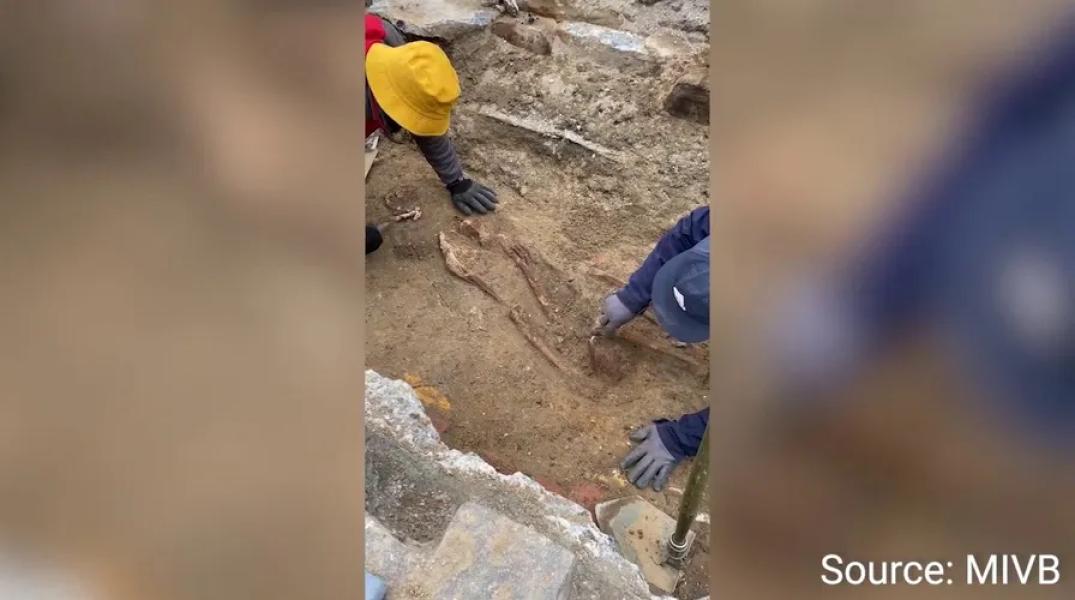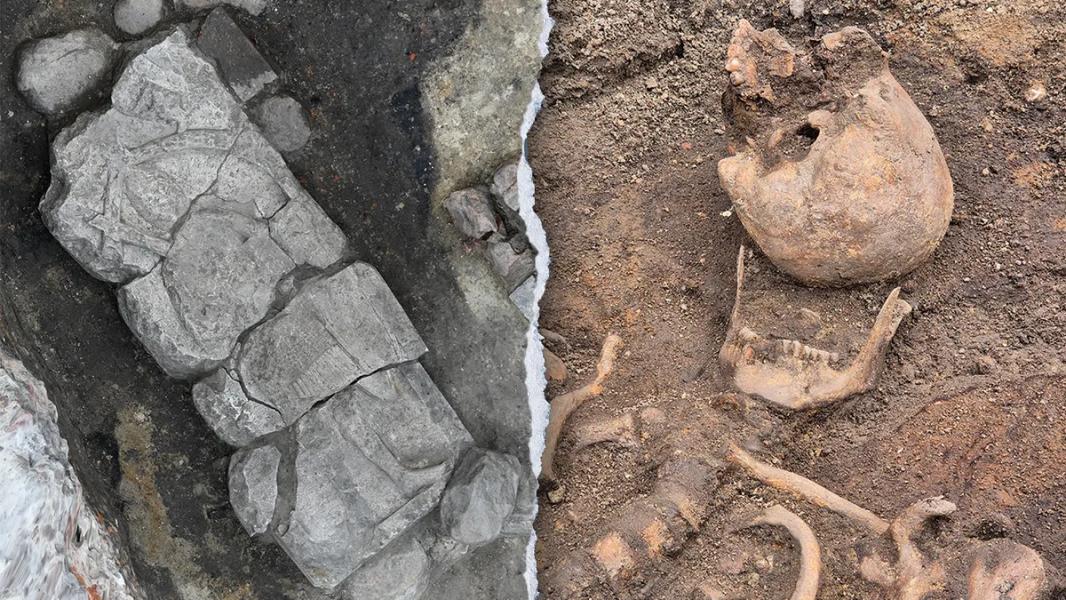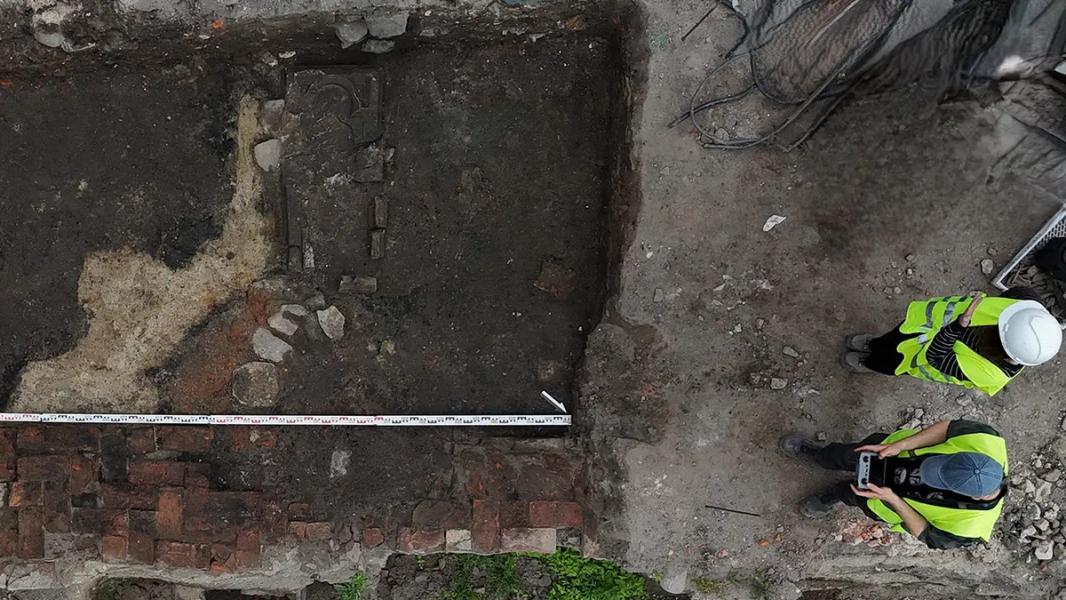
Video: Archaeologists find medieval remains in central Brussels
In Brussels, Belgium, archaeologists recently stumbled upon traces of an ancient cemetery located in an active part of the city. The remains date back to the Middle Ages. (Source: @mijnmivb via Facebook)
NEWYou can now listen to Fox News articles!
Polish archaeologists have recently discovered the burial site of a noble knight in excellent condition – and all this in the heart of a popular tourist town.
The tomb was discovered in Gdansk, Poland, a historic city renowned for its colorful architecture and picturesque location on the Motlawa River. The discovery was reported this month by Polish archaeological firm ArcheoScan.
The knight's grave was excavated beneath the former site of Lodziarnia Miś, a popular ice cream parlour among locals located at the crossroads of Sukiennicza and Grodzka streets.
In an interview with Fox News Digital, the organization noted that the site was once a 13th-century cemetery, located next to the remains of Gdansk's oldest known church. Both sites are located in the city's historic center, known as Śródmieście.
“This church was built from oak, felled in 1140, according to dendrochronological dating,” the organization said. “It is currently considered the oldest wooden church ever found in Poland.”

Archaeologists recently discovered a knight's burial in the center of Gdansk's historic district, near the oldest wooden church in Poland. (Sylwia Kurzynska / ArcheoScan)
The tombstone, dating back to the late 13th or 14th century, was buried in the city's early medieval fortifications. Archaeologists say the site served as a “key place of power, faith and burial” in medieval Gdansk.
The tomb likely belonged to a high-profile knight, as it was made of limestone brought from the Swedish island of Gotland. The elaborate carvings on the tomb also indicate that the tombstone was created by a highly skilled craftsman.
“Figured tombstones depicting people in full-length armour are rare in Poland, especially in the 13th–14th centuries.”
Photographs from the discovery site show a vague image of a standing man in full armor and greaves.
“In the image, he is holding a sword and shield,” ArcheoScans noted.
Despite some damage, the head, left foot and many pieces of armour and weapons were preserved.

Despite the fragile composition of the limestone, the knight's tombstone retained amazing details, including elements of chainmail, after centuries spent underground. (Sylwia Kurzynska / ArcheoScan)
According to ArcheoScan experts, although the limestone is quite fragile, the tombstone has been well preserved over the centuries.
“The tombstone is in surprisingly good condition considering it is made of soft limestone and has been underground for centuries,” the organization added. “The carvings, armour and shield are still visible.”
The document also stated: “Such tombstones were quite rare in Poland at the time and were usually erected for high-ranking individuals. However, there is no evidence linking this figure to the Teutonic Order, and no inscriptions support such a connection.”
During the excavation, archaeologists carefully lifted the tombstone and discovered the complete skeleton of a knight. A preliminary examination showed that the warrior's height was between 160 and 160 cm, which was above average for that time.

The excavation site, known as Srodmiescie, is considered the most archaeologically valuable site in Gdansk, Poland.
Sourse: www.foxnews.com





